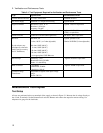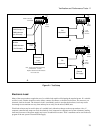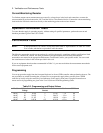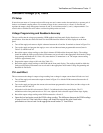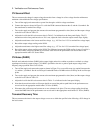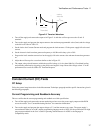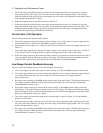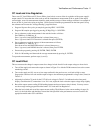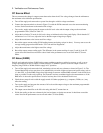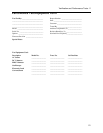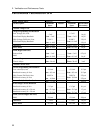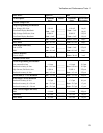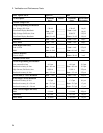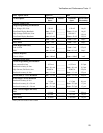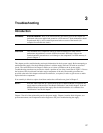2 - Verification and Performance Tests
20
CC Source Effect
This test measures the change in output current that results when the AC line voltage changes from the minimum to
the maximum value within the specifications.
a. Turn off the supply and connect the ac power line through a variable voltage transformer.
b. Connect the output terminals as shown in Figure 2-1a with the DVM connected across the current monitoring
resistor. Set the transformer to the nominal line voltage.
c. Turn on the supply and program the current to the full scale value and the output voltage to the maximum
programmable value (Vmax) in Table 2-2.
d. Adjust the load in the CV mode for full scale voltage as indicated on the front panel display. Check that the CC
annunciator is on. If it is not, adjust the load so that the output voltage drops slightly.
e. Adjust the transformer to the lowest rated line voltage.
f. Record the output current reading (DVM reading/current monitoring resistor in ohms). You may want to use the
average reading program described under “CC Load and Line Regulation”.
g. Adjust the transformer to the highest rated line voltage.
h. Record the output current reading again. The difference in the current readings in steps (f) and (h) is the CC
source effect and should not exceed the values listed in the performance test record card under CC Source
Effect.
CC Noise (PARD)
Periodic and random deviations (PARD) in the output combine to produce a residual ac current, as well, as an ac
voltage superimposed on the dc output. Constant current (CC) PARD is specified as the rms output current in a
frequency range 20 Hz to 20 Mhz with the supply in CC operation.
a. Turn off the supply and connect the load, monitoring resistor, and rms voltmeter as shown in Figure 2-1a. The
Current Monitoring resistor may have to be substituted by one with a higher resistance and power rating, such as
a 1 ohm 50W, to get the RMS voltage drop high enough to measure with the RMS voltmeter. Leads should be as
short as possible to reduce noise pick-up. An electronic load may contribute ripple to the measurement so if the
RMS noise is above the specification a resistive load may have to be substituted for this test.
b. Check the test setup for noise with the supply turned off. Other equipment (e.g. computers, DVMs, etc.) may
affect the reading.
c. Turn on the supply and program the current to full scale and the output voltage to the maximum programmable
value (Vmax) in Table 2-2.
d. The output current should be at the full scale rating with the CC annunciator on.
e. Divide the reading on the rms voltmeter by the load resistance to obtain rms current. It should not exceed the
values listed in the performance test record card under CC Noise (RMS).



